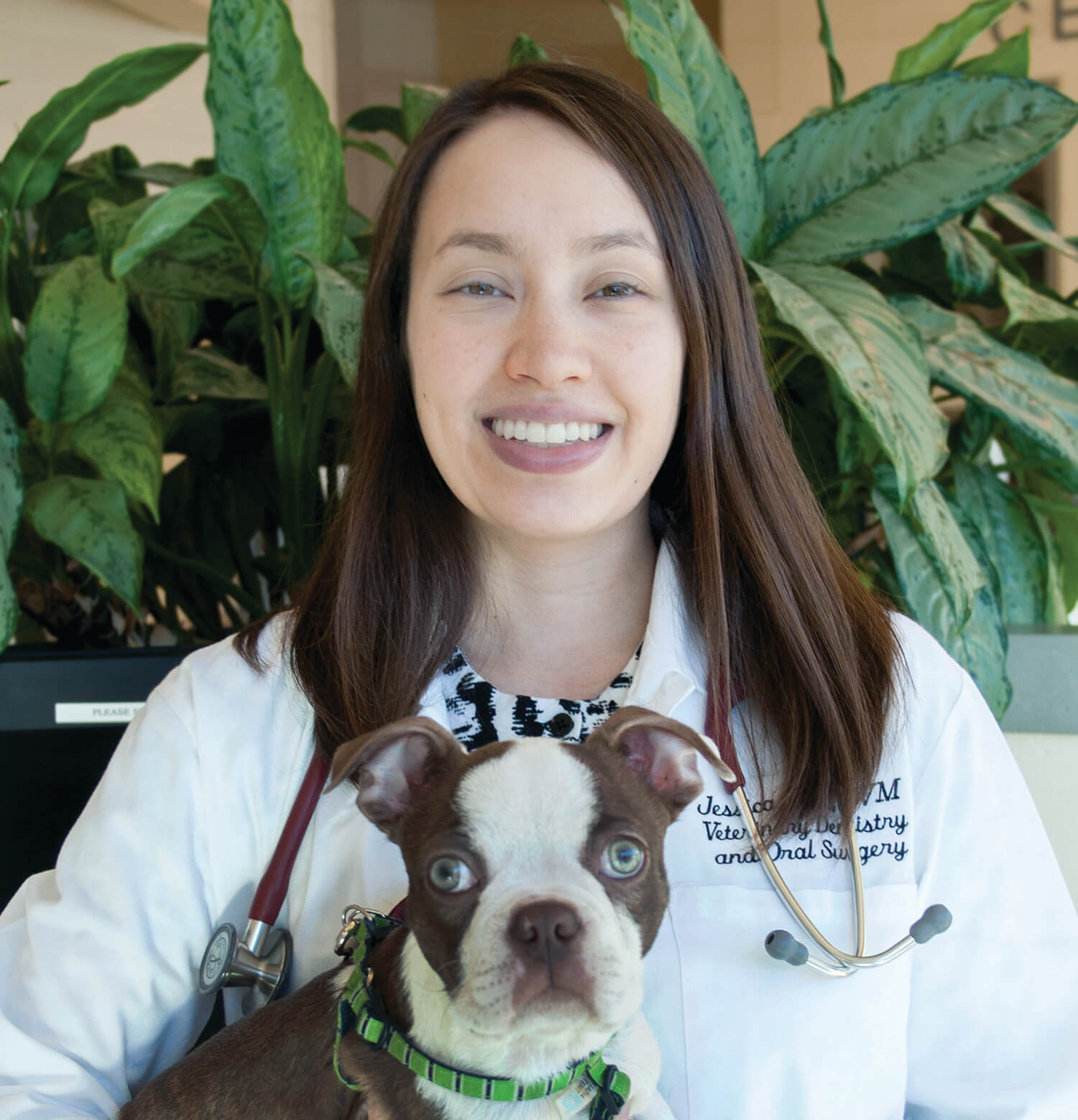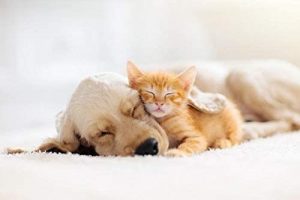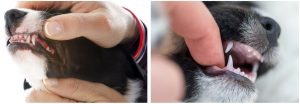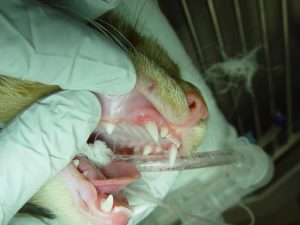-
Adopt
-
Veterinary Care
Services
Client Information
- What to Expect – Angell Boston
- Client Rights and Responsibilities
- Payments / Financial Assistance
- Pharmacy
- Client Policies
- Our Doctors
- Grief Support / Counseling
- Directions and Parking
- Helpful “How-to” Pet Care
Online Payments
Emergency: Boston
Emergency: Waltham
Poison Control Hotline
-
Programs & Resources
- Careers
-
Donate Now
 By Jessica Riehl, DVM, DAVDC
By Jessica Riehl, DVM, DAVDC![]()
angell.org/dentistry
dentistry@angell.org
617-522-7282
March 2021
 Comparative to humans, our canine and feline patients have a significantly shorter interval of time when the deciduous dentition is present and growth is occurring. However, this period of tooth development, tooth exfoliation, and jaw growth can have a huge impact on these pets over a much greater length of time. The key to pediatric dentistry is being able to recognize normal from abnormal – although it may not be an immediate problem, we can often assist in helping prevent a future issue.
Comparative to humans, our canine and feline patients have a significantly shorter interval of time when the deciduous dentition is present and growth is occurring. However, this period of tooth development, tooth exfoliation, and jaw growth can have a huge impact on these pets over a much greater length of time. The key to pediatric dentistry is being able to recognize normal from abnormal – although it may not be an immediate problem, we can often assist in helping prevent a future issue.
Dental Formula and Eruption Times
If we know the dental formulas and eruption times, it will help us identify abnormal pathology including missing teeth, delayed eruption, persistent/retained teeth, and supernumerary teeth. Neither the first premolar nor any of the molars have deciduous teeth (they are nonsuccessional teeth). When differentiating between deciduous or permanent dentition, the deciduous teeth can often be identified based on the tooth shape and smaller size. It is important to remember that the deciduous third and fourth premolars will look like the adult fourth premolar and first molar in shape.
Dental formula for deciduous teeth – Canine
-
- I3 – C1 – P3 // I3 – C1 – P3
Dental formula for deciduous teeth – Feline
-
- I3 – C1 – P3 // I3 – C1 – P2
Eruption times for deciduous dentition – Canine
-
- Incisors 3-4 weeks
- Canines 3 weeks
- Premolars 4-12 weeks
- Molars – no deciduous
Eruption times for deciduous dentition – Feline
-
- Incisors 2-3 weeks
- Canines 3-4 weeks
- Premolars 3-6 weeks
- Molars – no deciduous
Dental formula for permanent teeth – Canine
-
- I3 – C1 – P4 – M2 // I3 – C1 – P4 – M3
Dental formula for permanent teeth – Feline
-
- I3 – C1 – P3 – M1 // I3 – C1 – P2 – M1
Eruption times for permanent dentition – Canine
-
- Incisors 3-5 months
- Canines 4-6 months
- Premolars 4-6 months
- Molars 5-7 months
Eruption times for permanent dentition – Feline
-
- Incisors 3-4 months
- Canines 4-5 months
- Premolars 4-6 months
- Molars 4-5 months
Deciduous Teeth – Persistent, (Retained), or Fractured
Common pathology associated with deciduous teeth include persistent or retained teeth. These two terms are often used interchangeably, however, this is not appropriate as each term is specific. Persistent deciduous teeth is the term that should be used for a deciduous tooth which remains present when the adult tooth is erupted. It persists, despite the presence of the adult tooth. The deciduous tooth in this case should be extracted. No two teeth should occupy the same space. The presence of the deciduous tooth can lead to malocclusion and will predispose the adult tooth to periodontal disease. The term retained is better suited for dental structure that is present underneath the gums (i.e. retained tooth root) or can sometimes be used when describing a deciduous tooth which is present due to the lack of an adult counterpart. I most commonly see this with second premolars in dogs. I let owners know that a dental radiograph should be performed to ensure there is no adult tooth. The deciduous tooth can remain if there is no indication of pathology associated with it. Owners are warned that the tooth roots may resorb and there is the potential the tooth can fracture – both situations requiring extraction in the future.
With adult patients we have more treatment options for a fractured tooth with pulp exposure (complicated fracture, endodontic disease) including extraction, root canal therapy, or vital pulpotomy given the right circumstances. If a deciduous tooth is fractured, treatment recommendation should be for extraction. Not only is the fractured tooth a source of pain and infection, but the inflammation associated with endodontic disease can affect the developing adult tooth bud. The apex of the deciduous tooth root sits in close proximity to the permanent tooth bud and changes in the local environment can lead to disruption of the ameloblasts forming enamel on the adult tooth.
Malocclusions
Most times patients presenting for malocclusion will be pediatric or young juvenile when this issue is noticed. When assessing occlusion, keeping in mind the standards of normal occlusion are most important. Normal or ideal occlusion (canine) consists of interdigitation of the upper and lower teeth, maxillary incisor teeth are slightly rostral to the mandibular incisor teeth with the mandibular incisor teeth contacting the cingulum of the maxillary incisors, the mandibular canine teeth should be slightly inclined labially and sit within the interdental space between the maxillary third incisor and canine tooth, the crown cusps of the mandibular premolars should be lingual to the maxillary premolar teeth, the premolars should have a pinking shears relationship with the mandibular first premolar rostral to the maxillary premolars, the mesial cusp tip of the maxillary fourth premolar should be lateral to the space between the mandibular fourth premolar and first molar. Normal occlusion in cats follows the same basic guidelines with minor adjustments.
Malocclusions can be a result of abnormal tooth positioning or due to abnormal jaw length relationship. Many animals with malocclusion may have more than one deviation from normal and thus multiple concurrent malocclusions (i.e. mandibular distoclusion with linguoverted mandibular canine teeth). Class 1 malocclusion consists of a normal jaw length relationship with malpositioning of one or more teeth. Generally these malocclusions are described by the physical direction that the tooth is angled or deviated (i.e. mesioverted). Another version of class one malocclusion is a crossbite, where the mandibular teeth are more buccal or labial to the opposing maxillary tooth. Crossbites can be described as rostral crossbite – referring to the incisor teeth, or caudal crossbite – when the malocclusion is associated with the premolars or molars. Other classes of malocclusion deal with skeletal malocclusion.
Class 2 malocclusion, or mandibular distoclusion, is when the mandible occludes caudal to the normal position relative to the maxilla. Colloquial terms for this malocclusion include parrot mouth, overbite, overshot jaw. On the other hand, class 3 malocclusion, mandibular mesioclusion, the mandible will be rostral to the maxillary arch. In some breeds this occlusion is normal for the breed (i.e. brachycephalics). Other terms often used are underbite or monkey mouth. Class 4 malocclusions involve asymmetry and can be in a rostro-caudal, side-to-side, dorso-ventral direction, or a combination of these. We try to steer away from the term wry bite, as this is non-specific and does not accurately provide an image of a patient’s malocclusion. An example of class 4 malocclusion in a rostrocaudal direction would be when either the right or left side of the face has mandibular mesioclusion or distoclusion. A side-to-side malocclusion would describe when the midline alignment of the maxilla and mandible is shifted. And finally, a dorsoventral malocclusion would correspond with an open bite in which there is abnormal vertical space between the maxilla and mandible when the mouth is in a closed position.
Treating malocclusion cases can be more of an art than a science, and frequently we are dealing with evolving circumstances. Expectations of malocclusion treatment should be relayed to the owner and procedures should be performed to provide pets with a comfortable bite rather than cosmetic outcome. Options for treatment include interceptive orthodontics (extractions), corrective orthodontics, or alteration to a tooth shape/structure (crown reduction with vital pulpotomy).
Our role as veterinarians in helping pets have a mouth free of discomfort and disease should begin when our patients are very young. Issues with deciduous dentition should not be overlooked due to the short timespan that these teeth are present, since these issues may contribute to problems when the patient gets older. The stage when adult teeth are erupting is a crucial time to ensure that teeth are accounted for, structurally normal, and positioned appropriately.

